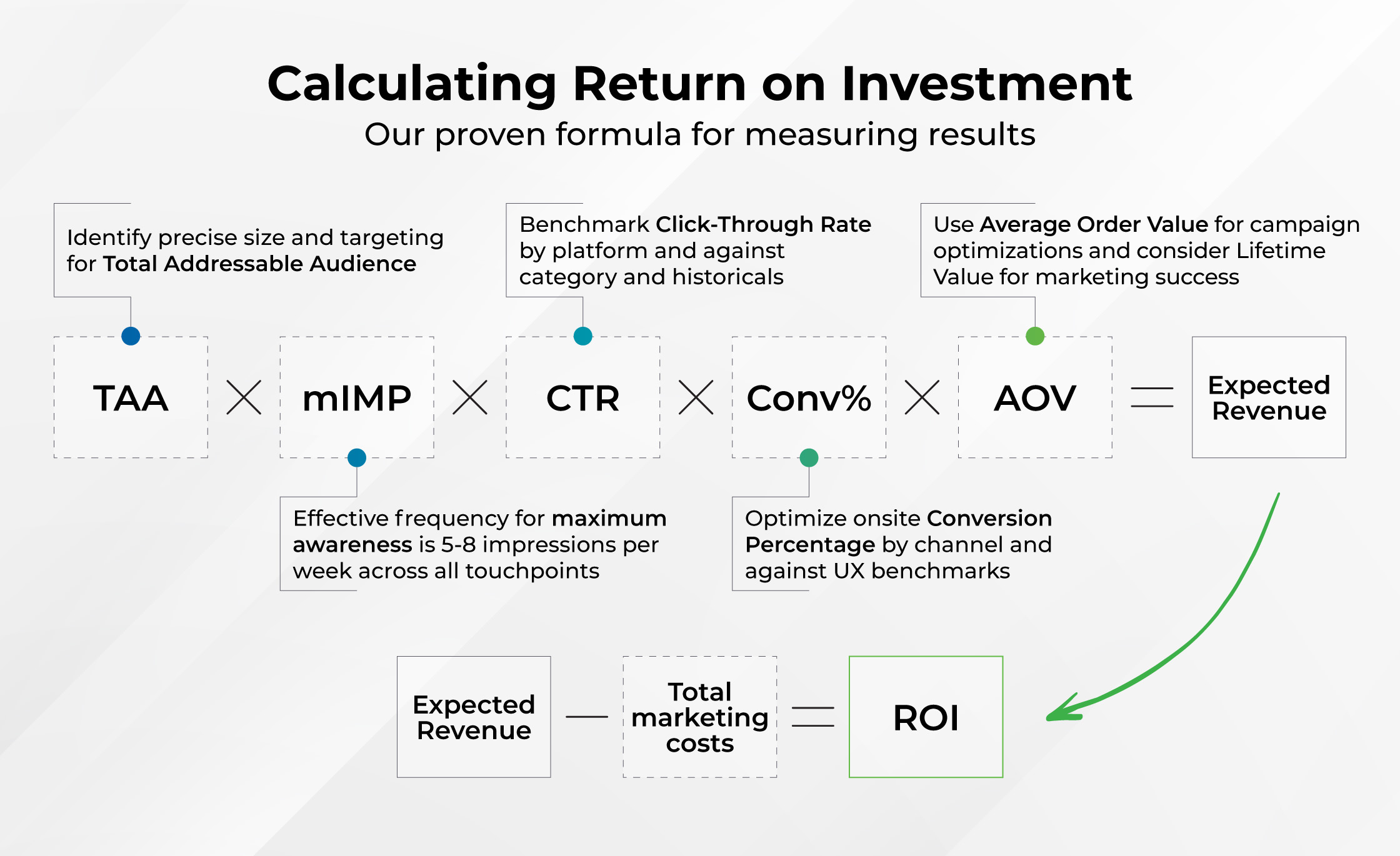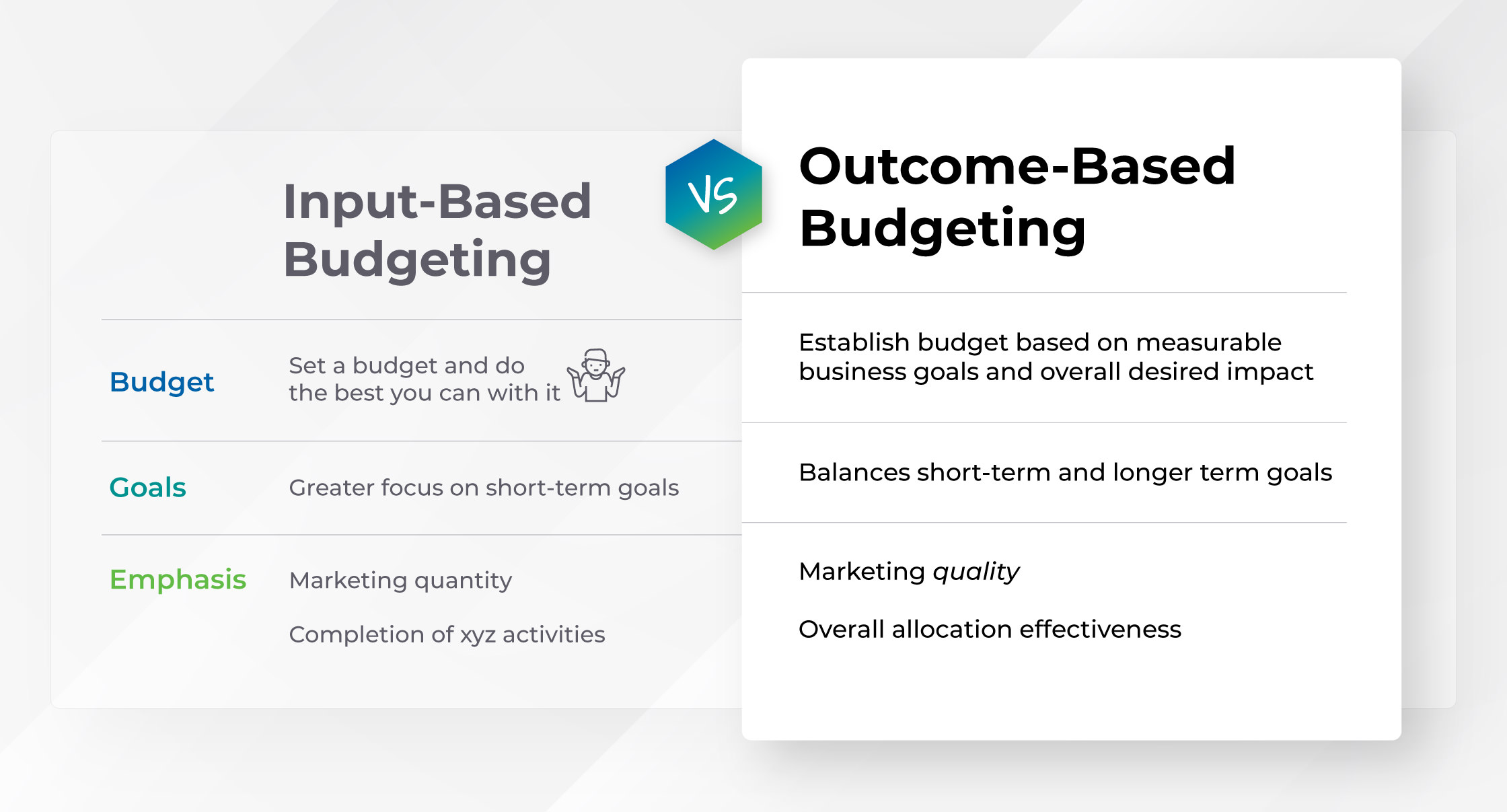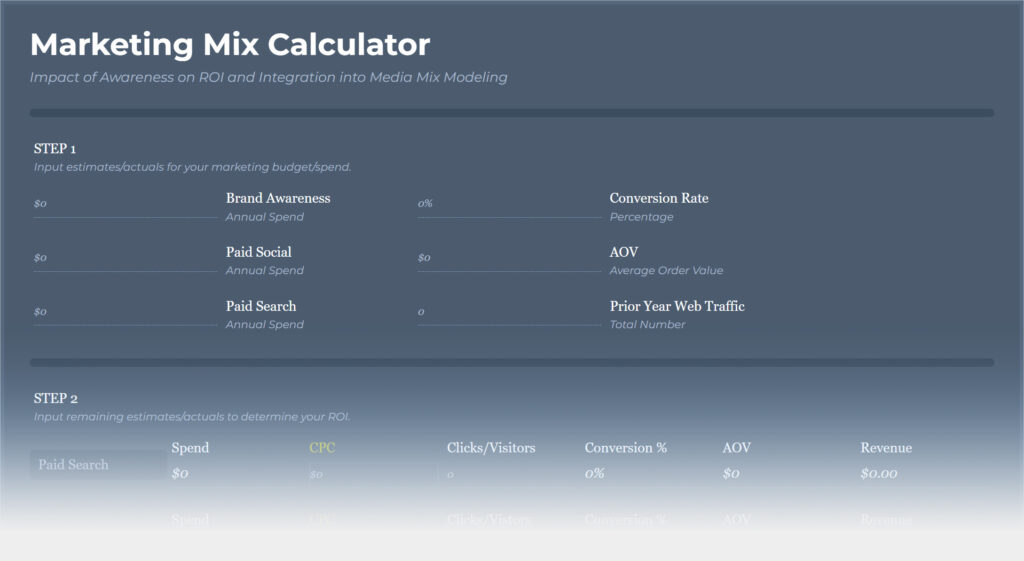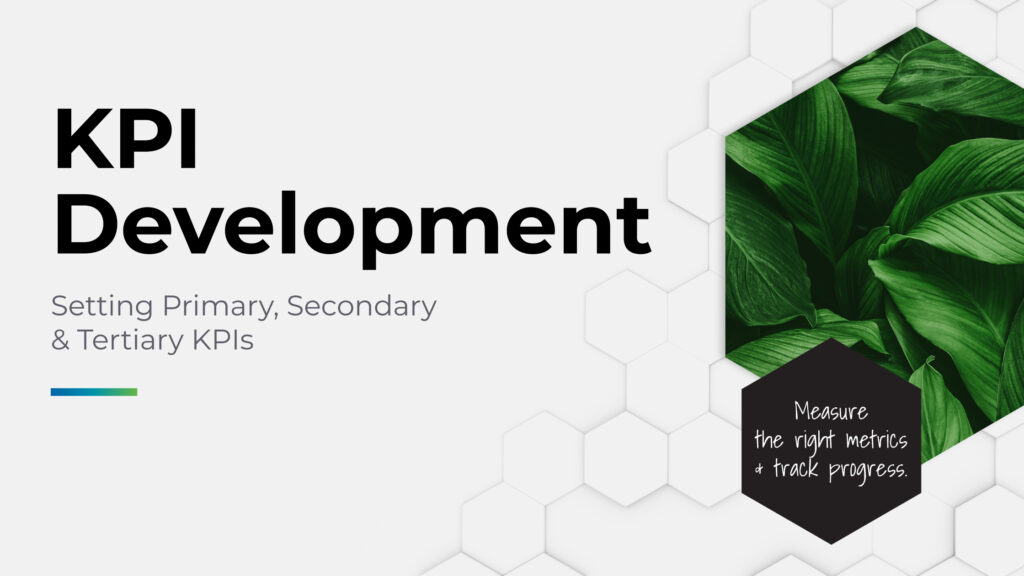
Marketing leaders continue to report ongoing pressure from their CEOs and CFOs to justify marketing budget allocations. We feel zero upset about this.
- There should be alignment between all brand leaders.
- There should be a data-driven explanation behind every dollar spent on marketing.
- And the old thinking that marketing ROI can’t be fully measured is…old. (Everything in marketing is measurable.)
This is why we advocate for outcome-based marketing and its data-driven budgets.
And why the remainder of this blog post will challenge brand leaders (in a loving way because we’re friendly humans) to rethink how you construct your digital marketing budget plans.
Keep reading as we explore:
- What is outcome-based budgeting?
- Why does Marketing need closer alignment with the CEO and CFO?
- What is the difference between outcome-based vs input-based budgeting?
- 7 steps to outcome-based budgeting
- The #1 mistake that kills excellent budgets
- Is outcome-based budgeting really recession proof?
What is outcome-based marketing?
You might know outcome-based marketing by another name, all of which infer what it is.
- Strategic Budgeting
- Results-Oriented Budgeting
- Performance-Driven Budgeting
- Data-Driven Budget Allocation
- ROI-Based Budgeting
- Metrics-Based Budgeting
- Evidence-Centric Budgeting
- Outcome-Driven Resource Allocation
Outcome-based is a data-driven marketing budgeting method that revolves around measurable outcomes instead of echoing historical allocations.
The B-School Dinner Party Exercise
A well-known business school and professional development exercise divides participants into groups and then asks them to plan a dinner party as quickly as possible. Most groups jump into creating a shopping list and delegating responsibilities. Sounds sensible, right?
*insert aggressive buzzer sound*
In the debrief, the facilitator points out the big flaw in this typical response:
No one began by asking, “What kind of experience do we want our guests to have?” In the quest to hurry up and finish first, most groups dove into logistics without ever defining the result they were seeking.
The process of defining your intended result first, and then reverse-engineering a plan to arrive at that result, is what outcome-based budgeting is all about.
We’re an agile marketing collective, which means speed is our middle name, but speed without a clear destination is a crash in the making.
Yes, let’s go fast – after we’re aligned on a holistic marketing strategy that clearly defines exactly where we’re going and why that supports overall business goals. (FYI: “We want more customers” is almost never the fullness of the answer.)
Is Agile Marketing The Future in a Post-Linear World?
Learn the importance of agile digital marketing in a performance marketing environment that demands quick, adaptive marketing teams.
Outcome-based marketing is #8thgradealgebra. If we know the desired outcome, we can solve the equation.
For decades, it has benefited many agencies and independent contractors to reinforce the idea that marketing performance is largely guesswork. Brands have dumped the equivalent of many countries’ GDP into marketing activities that were never adequately measured or held accountable for ROI.
Whether you’re an enterprise B2B brand with a long sales cycle, or a high-volume eCommerce brand looking for lightning quick on-site conversions, the answer is the same:
Marketing performance is high school math – 8th grade, to be exact.

Tell us what you want to know and our mathletes will push their glasses up on their noses and say, “Sure, we’ve got a calculator for that.”
We use known measurements (on-site conversion percentages, close ratio from the sales team, lower funnel conversion, etc.) and best-in-class averages to solve the balance of your growth equation, which is what determines the most aligned budget.
Marketing Math: Using Algebra in Performance Marketing
You might be surprised to learn that 8th grade algebra comes in mighty handy when evaluating your digital marketing strategy and determining data-verified improvements for your sales and marketing teams.
Outcome-based budgeting forces teams to leave their performance silos and function as one cohesive unit.
For example, greater brand awareness is a common performance goal, and it’s entirely measurable so yes, we can absolutely run after that outcome.
But increased brand recognition doesn’t necessarily have a revenue goal tied to it, which would require a totally different spend of marketing dollars.
If part of the organization is aligned to prioritizing awareness but another part is still fanatical about transactional sales conversions, the team is misaligned and likely to implement tactics that counteract each other. Sadly, we see this happen quite often.
Speaking of internal alignment…
Highly effective marketing budgets require much closer integration between Marketing and the CEO and CFO.
For several years now, The CMO Survey has reported that marketers feel increased pressure from their CFO and CEO to “demonstrate the impact of marketing actions on financial outcomes.”
Brand leaders want proof of the impact of marketing spending. This is not unreasonable. And mathematically speaking, it’s entirely achievable.
The trouble is that without close collaboration, C-suite leaders (mostly our CFO and CEO friends) tend to zero in on the short-term financial impact of marketing spending – namely, revenue. And if the short-term numbers aren’t sparkling, “budget cuts” enters the chat.
Goal-driven marketing doesn’t just look at revenue, because every marketing dollar is not a revenue-focused investment.
Use Media Mix Modeling to Optimize the Impact of Your Brand Awareness Initiatives
Plug your metrics into our ROI calculator and watch #8thGradeAlgebra solve the equation!
7 steps to outcome-based marketing budgets
1. Clear Objectives
Define specific marketing objectives that ladder up to your overall business goals and associated performance metrics.
2. Key Performance Indicators (KPIs)
Identify quantifiable KPIs (primary, secondary, and tertiary) that directly relate to your objectives.
KPI Development: Setting Primary, Secondary & Tertiary KPIs
Learn how to set effective primary, secondary, and tertiary KPIs with our KPI development guide. Measure the right metrics and track progress.
3. Data Analysis
Triple confirm the successful implementation of your marketing analytics tech stack. Most brands are either a) not measuring enough, or b) don’t realize they’re relying on inaccurate data streams.
4. ROI Calculation
Calculate the ROI for each marketing channel and campaign.
5. Flexible Budget Allocation
Outcome-based budgeting encourages agility and responsiveness. The budget is crafted based on the forecasted ROI of marketing activities, AND remains flexible to shift performance-based allocations if/when data warrants a pivot.
6. Testing and Optimization
Implement something and leave it alone? Nope. Never. Outcome-based budgeting combines the flexibility mentioned above with multivariate tests and other optimization strategies to continuously improve performance.
7. Accountability and Reporting
Establish clear accountability and reporting guidelines. This transparency keeps everyone aligned and ensures no team’s work contradicts another’s.

What is the difference between outcome-based vs input-based budgeting?
Whether they know it or not, most brands are practicing input-based budgeting.
Input-based is a marketing budgeting technique that focuses mostly on available inputs rather than performance outcomes. We’re not knocking this approach – at least not entirely. There are times when various business constraints might require it. We get it.
AND, we wouldn’t be helping you at all if we didn’t acknowledge that input-based marketing is the least efficient path to topline performance.

The #1 mistake that kills successful marketing budgets
Let’s assume you’re now vibrating with “We’ve gotta do this outcome-based thing!” enthusiasm. Yay. We love this for you!
However, there’s a pitfall we want to make sure you avoid.
Creating a budget based on your desired marketing outcome is a power move. But it must be paired with a tough question: Given the wider context of our business, is that outcome even achievable?
- Does your current website structure align with that goal? (Most brands have no idea how many performance hits are directly attributable to flawed website implementations.)
- Has the accuracy of measurement functions been verified by multiple sources? (Again, most brands are working with limited or inaccurate data, and they have no idea.)
- Is your existing marketing team positioned to achieve these outcomes?
- What about your current inbound sales team?
Website Redesign SEO: How to Protect Organic Performance
A redesign can be detrimental to your website’s organic rankings and traffic. Here’s how to sustain and improve SEO during a website redesign.
Is OBM recession-proof?
We’re a bunch of math-minded pragmatists, so you can guess where this is going…
Recessions affect everything you do in marketing – as they should. National or global economic upheavals are rolling waves to be expertly navigated.
Our Recession Advice: Stop trying to build a boat that will stay perfectly still and unaffected through a storm – the laws of physics won’t allow it. Build a boat that can weather the storm.
The benefit of outcome-based marketing during recessionary periods is that it’s focused on ensuring that you continue to receive your necessary outcomes without nosediving into a spending spiral.
Outcome-based marketing creates:
- A more nimble organization and team ethos
- Clarity on the top priorities that align with your targets
- Structure that monitors and effectively manages real-time data, instead of pulling an ostrich and trying to wish it all away.
Outcome-based marketing insulates brands against recessions.
And for the love of all the good things, please do NOT be convinced that shutting down all marketing is a legitimate strategy before, during, or after a recession.
In a period of volatility, the worst thing you can do is abandon marketing completely.
All the brand equity you’ve built? Lost.
The foundation for tomorrow’s brand equity, which you should be building now? Lost before it could get going.
TL;DR on outcome-based marketing budgets
- Outcome-based marketing budgeting is an effective tool for brand leaders who need to prove the ROI of marketing efforts.
- Outcome-based marketing selects measurable outcomes and then backs into the creation of the marketing budget that facilitates those outcomes.
- To be truly effective, outcome-based marketing also requires:
- Close alignment between Marketing leaders, the CFO and CEO.
- Confirmation that the brand’s website structure is aligned with target outcomes
- Confirmation that analytics tools are providing clean and complete data
- Confirmation that the existing marketing and inbound sales teams are aligned.
- Most brands practice input-based marketing, which has a more short-term focus and emphasizes the quantity (vs quality) of marketing activities.
- Outcome-based marketing insulates brands during recessions because it keeps them agile, data-oriented, and results-focused.









